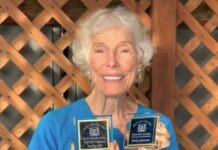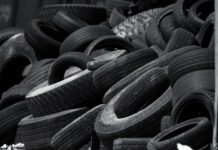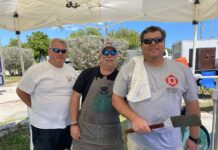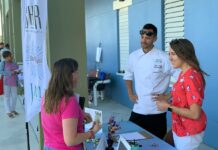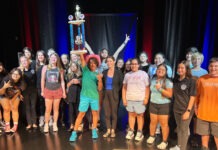Key Largo’s Stellrecht Point, found on the bayside in the area of MM 105, is named for a German immigrant named Otto Stellrecht. Stellrecht was born in 1863 and left Germany on a boat bound for America when he was 19. The ship docked at Philadelphia, where his brother had lived but died before Otto arrived.
Stellrecht would go to New Orleans before he came to Florida in 1892. In Punta Gorda, he and a partner operated a pharmacy for several years. Circa 1895, Stellrecht moved to one of the Torch keys about 25 miles up from Key West. There, he decided to become a farmer and tended to a grove of lime trees. It has also been suggested that he spent time raising turkeys on Pigeon Key. Otto would end up on Key Largo, in the area of what is today MM 105, where, in 1898, he filed a homestead claim for 120 acres.
On Key Largo, Otto continued to farm and produce crops of pineapples, melons, tomatoes and avocados. There is, however, no mention of turkeys. His lime grove was two acres and produced, some years, about 150 barrels of limes that sold from between $3 to $5 per barrel. He also had six acres of red Spanish pineapples. Field workers were paid $2 a day to harvest the pineapple crop. The spiny fruits were cut from their stalks and brought, in bunches, down to the beach. From the beach, they could be carried down the narrow dock that stretched over the shallows, loaded onto boats, and shipped to Key West or Miami. At Key West, the cargo was shipped to markets by steamer.
By 1898, the Florida East Coast Railway had begun offering service from Miami to east coast markets like Philadelphia, Boston and New York. In 1908, Henry Flagler’s train would be offering daily service between the mainland and Knights Key. Once the train started roaring across Key Largo, Stellrecht’s pineapples would have more than likely been shipped by the more reliable rail.
In an article printed in the Miami Herald on March 31, 1929, Stellrecht was quoted as saying, “In those days, there was no market for avocados and that whatever was raised above home consumption had to be thrown away.”
Crops, however, were not the only thing Otto’s land was producing. There was also honey, lots and lots of honey. Beekeeping became a side job for Stellrecht and, though he had moved to Miami by 1929, he maintained an apiary of 300 colonies on his Key Largo property. According to Stellrecht, “bee season” lasted from about April to June, and the busy insects primarily buzzed around the flowers of the black mangrove, which made for excellent, sweet honey. According to Stellrecht, his bees produced 20,000 pounds of honey annually.
Stellrecht’s apiary was not the only one on the island or even the only one on his own property. J. B. Colton, in care of the Keller Grocery Company, placed an advertisement for the sale of his apiary in The Miami Evening Record on September 12, 1906. He was selling 150 stands of bees for $500, a price that “…about covers cost of hives and appliances. The bees cost you nothing. The apiary is on the farm of Otto Stellrecht.” Colton goes on to say: “The bee range is one of the best in the state, having given an average of 250 pounds per stand, two seasons, and a crop of about 14,000 for each of the seasons past. Reason for selling is failing health and strength and advanced age.”
Mr. O.O. Poppleton of Stuart, Florida, also had beehives on Key Largo. Known along Florida’s east coast as the Bee King, Poppleton lived aboard his aptly named ship, The Drone. The Bee King moved his 200 colonies between Key Largo and the mainland annually. They were kept on Key Largo and around Caesars Creek from April through August.
1909 was a record year for the Bee King. Poppleton’s bees produced 30,000 pounds of honey. In the August 7, 1909, edition of the San Mateo Item, Poppleton says, “As far as I know, this is the largest single crop of honey ever taken on the East Coast south of Titusville or on the keys.”
With 41 years of apiary experience, Poppleton claimed the best honey was produced from saw palmetto flowers. In the June 22, 1910, edition of The Miami News, Poppleton remarked, “…they are very much superior in flavor and richness to more fragrant blooms of the cabbage palm and that honey made from them is finer and stands shipping better than that made from other blossoms. Citrus blossoms,” he said, “were not much in favor with the bees and made very poor honey.”




















